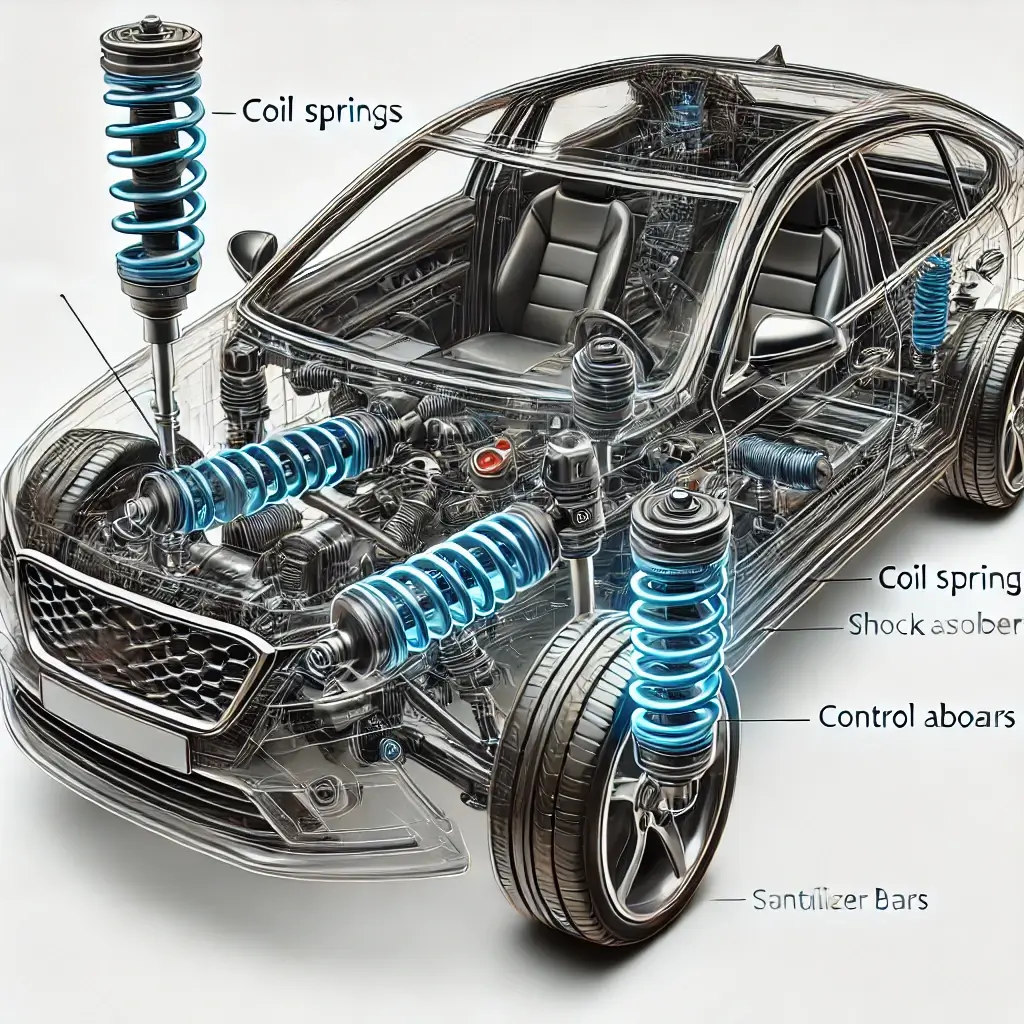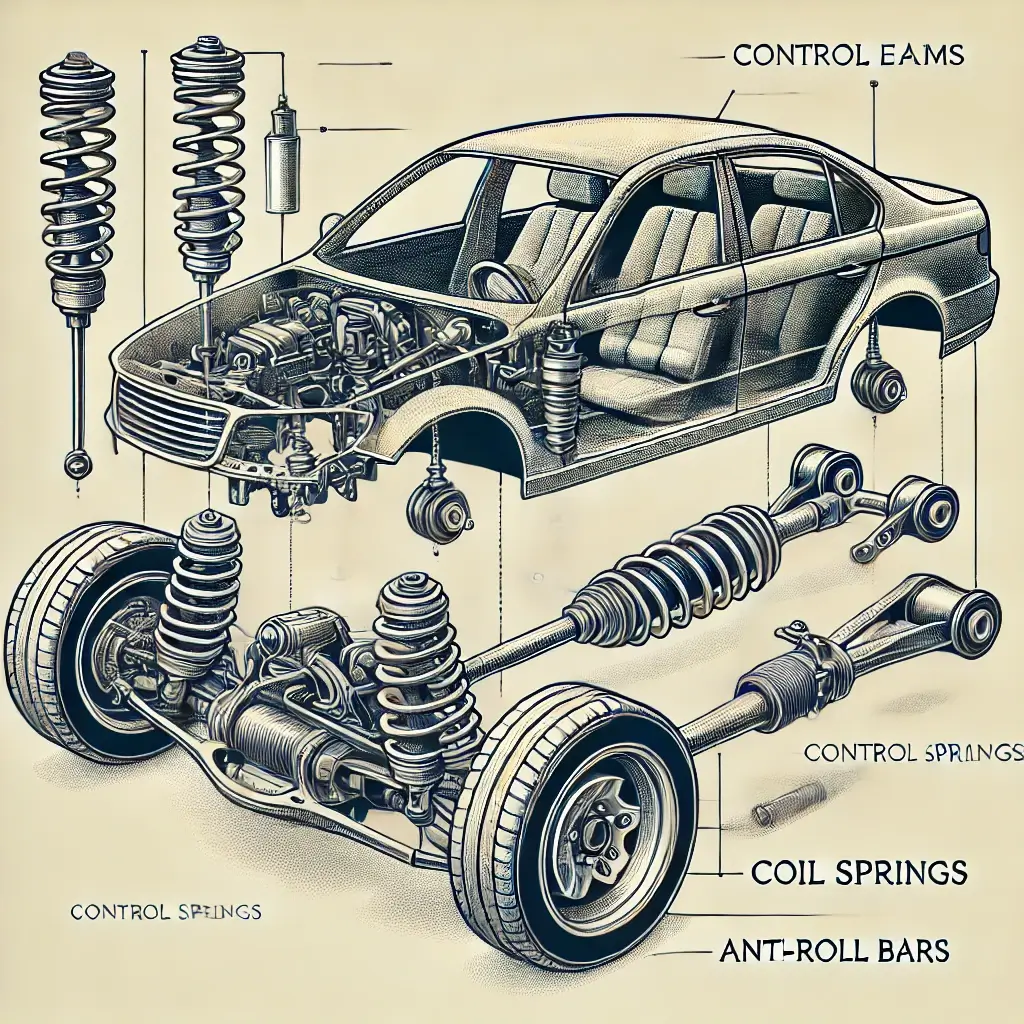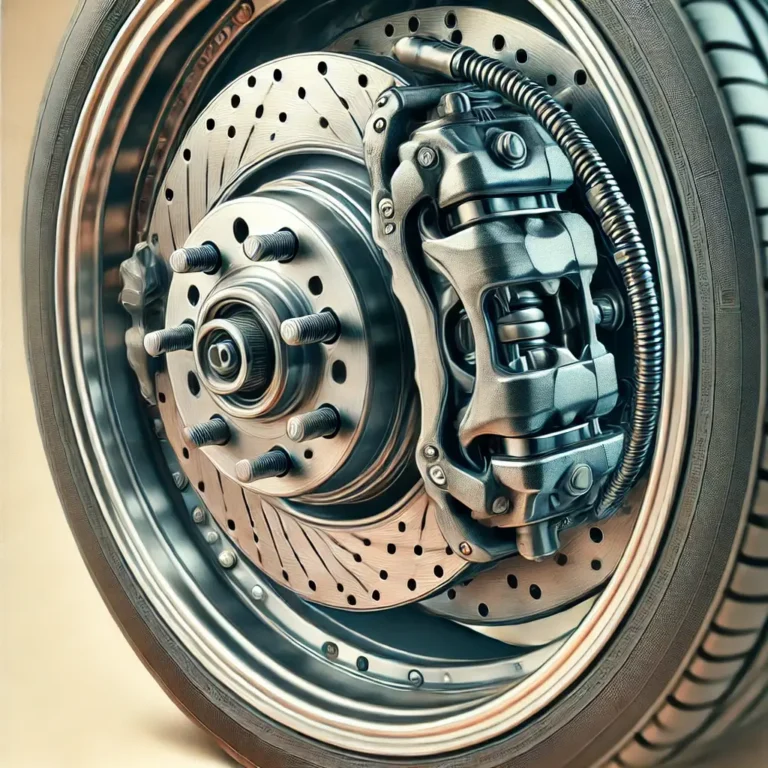🚗The Complete Guide to Car Suspension Systems: Types, Components, and Working Mechanism
✅ Introduction:
The suspension system is one of the most essential components in a vehicle, responsible for providing stability, comfort, and handling performance. It absorbs shocks from road irregularities, keeps the tires in contact with the road, and ensures the driver maintains control of the car. Whether you drive on smooth highways or rough terrains, the suspension system plays a vital role in ensuring safety and ride quality.
In this comprehensive guide, we’ll cover everything about car suspension systems, including types, components, working principles, and maintenance tips.
🔥 What Is a Car Suspension System?
A car suspension system is a combination of mechanical components, springs, dampers, and linkages that connect the vehicle to its wheels. Its primary functions include:
- Absorbing shocks and vibrations from the road.
- Maintaining tire contact with the surface.
- Enhancing stability and control during braking, cornering, and accelerating.
- Providing a comfortable ride by reducing impacts.
⚙️ Types of Car Suspension Systems
Modern cars use different types of suspension systems depending on their design, performance needs, and cost factors. Here are the three main types:
✅ 1. Independent Suspension
An independent suspension system allows each wheel to move independently of the other. This results in a smoother ride and better handling.
📌 Types of Independent Suspension:
- MacPherson Strut Suspension:
- One of the most widely used systems in modern cars.
- Consists of a strut assembly that combines a coil spring and a shock absorber.
- Common in front-wheel-drive cars due to its simplicity and compact design.
- Advantages:
- Lightweight and cost-effective.
- Improves steering precision.
- Easier to repair.
- Disadvantages:
- Less durable for heavy-duty applications.
- Limited suspension travel.
- Double Wishbone Suspension:
- Uses two arms (wishbones) to connect the wheel hub to the vehicle’s frame.
- Provides superior handling and stability.
- Common in sports cars and performance vehicles.
- Advantages:
- Better control and handling.
- Reduced body roll during cornering.
- Disadvantages:
- More complex and costly.
- Requires more space.
- Multi-link Suspension:
- Consists of multiple control arms that allow the wheels to move independently.
- Found in luxury cars and high-performance vehicles.
- Advantages:
- Improved ride comfort and stability.
- Better handling in turns.
- Disadvantages:
- Complex and expensive to maintain.
- Requires more space.

✅ 2. Dependent Suspension
A dependent suspension system has a solid axle connecting both wheels, causing them to move together. It is mainly used in older cars and trucks.
📌 Types of Dependent Suspension:
- Leaf Spring Suspension:
- Consists of long, flexible metal strips layered together.
- Commonly used in trucks and SUVs for heavy load-bearing capacity.
- Advantages:
- Simple and durable design.
- Excellent load capacity.
- Disadvantages:
- Less comfort on rough terrains.
- Reduced handling performance.
- Solid Axle Suspension:
- Uses a rigid beam connecting the two wheels.
- Found in heavy-duty vehicles.
- Advantages:
- Durable and cost-effective.
- Simple design, easy to maintain.
- Disadvantages:
- Poor handling on rough roads.
- Reduced ride comfort.
✅ 3. Semi-Independent Suspension
A semi-independent suspension offers partial independence between the wheels, improving handling without the complexity of full independent systems.
📌 Types of Semi-Independent Suspension:
- Torsion Beam Suspension:
- Common in small cars and hatchbacks.
- Uses a torsion beam axle that provides limited flexibility.
- Advantages:
- Lightweight and cost-effective.
- Compact design, ideal for smaller vehicles.
- Disadvantages:
- Limited handling performance.
- Less effective on rough roads.

🔧 Key Components of a Car Suspension System
- Springs:
- Coil Springs: Helical metal springs that absorb shocks.
- Leaf Springs: Stacked metal strips used in heavy vehicles.
- Air Springs: Use compressed air to adjust ride height and comfort.
- Shock Absorbers (Dampers):
- Control the spring movement, preventing excessive bouncing.
- Types:
- Hydraulic shock absorbers.
- Gas-filled shock absorbers.
- Struts:
- Combine the shock absorber and coil spring into a single unit.
- Support the vehicle’s weight and absorb shocks.
- Control Arms:
- Connect the wheels to the frame.
- Help maintain wheel alignment.
- Stabilizer (Anti-Roll) Bars:
- Prevent excessive body roll during cornering.
- Improve stability and handling.
⚙️ How Car Suspension Systems Work
The working principle of a car suspension system is based on absorbing road shocks and distributing the vehicle’s weight evenly.
- When the car hits a bump, the springs compress to absorb the impact.
- The shock absorbers dampen the oscillations, preventing the car from bouncing excessively.
- The control arms and linkages maintain wheel alignment, ensuring stability.
- In cornering, stabilizer bars prevent the car from tilting by distributing the force evenly across the wheels.
🌍 Car Suspension Systems Around the World
- Europe:
- Luxury and sports cars use multi-link and double wishbone suspensions for improved performance and comfort.
- Air suspension is common in high-end vehicles for adjustable ride height.
- United States:
- SUVs and trucks often use leaf spring suspensions for off-road capability and durability.
- MacPherson strut systems are widely used in passenger cars.
- Asia:
- Smaller, budget-friendly cars often use torsion beam suspension for cost efficiency.
- Performance cars include independent suspension systems for better handling.
🛠️ Suspension System Maintenance Tips
- Check for Worn-Out Bushings:
- Replace worn control arm bushings to prevent instability.
- Inspect Shock Absorbers:
- Leaking or damaged shocks reduce ride quality.
- Replace faulty shocks promptly.
- Wheel Alignment:
- Misaligned wheels affect suspension performance.
- Regular alignment improves handling.
- Suspension Noise:
- Listen for clunking or creaking sounds, indicating worn components.
🚦 Conclusion
The suspension system plays a crucial role in a car’s performance, safety, and comfort. Whether it’s independent, dependent, or semi-independent, each type offers specific benefits based on the vehicle’s needs. Proper maintenance of your suspension system ensures smooth rides, improved handling, and vehicle safety.
Understanding how suspension systems work and their different types helps drivers make informed decisions about car maintenance and upgrades.



